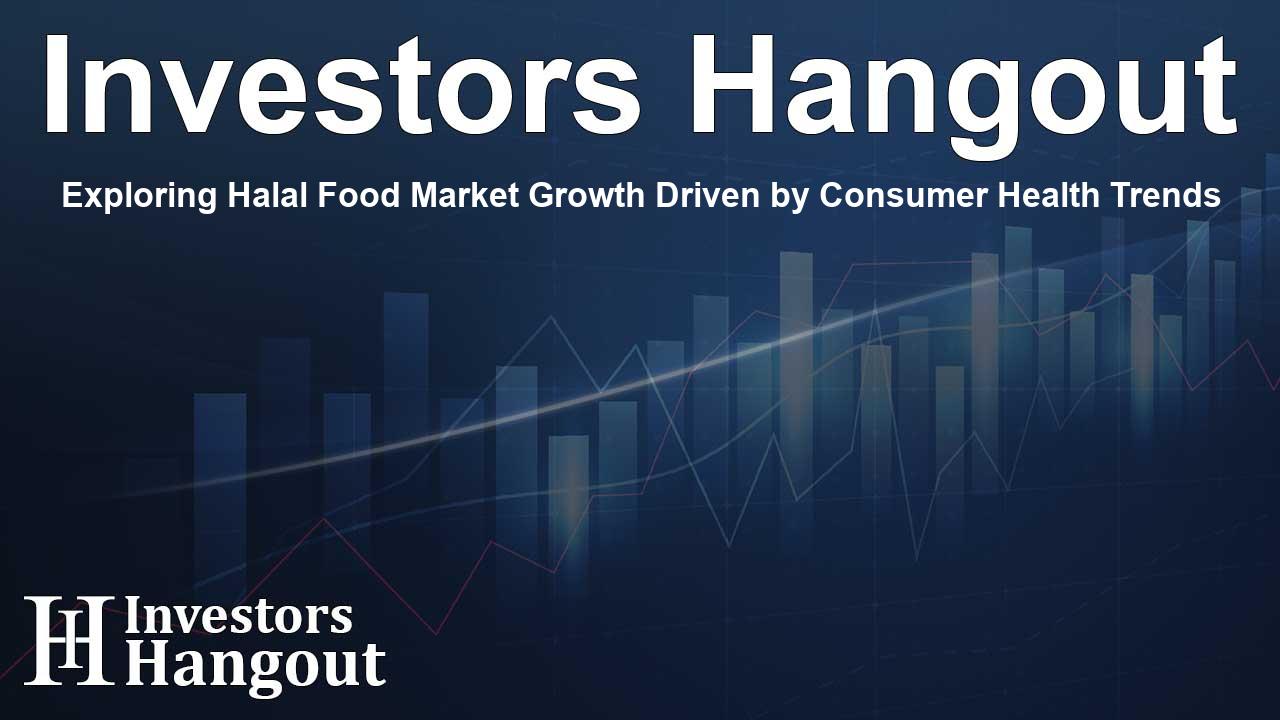Exploring Halal Food Market Growth Driven by Consumer Health Trends

Understanding the Halal Food Market Surge in the U.S.
The halal food market in the U.S. is on the brink of significant growth, projected to expand by USD 21.63 billion from 2025 to 2029. This impressive growth signifies a compound annual growth rate (CAGR) of 9% during the forecast period. A multitude of factors catalyze this expansion, particularly the increasing health consciousness among consumers and the rising popularity of halal food as not just a dietary choice for Muslims but also as a preferred option for many non-Muslims.
Market Dynamics and Trends Influencing Growth
The halal food market is fragmented, characterized by a variety of vendors seeking to strengthen their market presence through strategic partnerships. These alliances often span automotive, industrial, and commercial sectors, allowing for a more robust competitive strategy. Key players in this space include renowned companies such as Al Safa Foods Canada Ltd. and Crescent Foods. Their offerings cater not just to the traditional consumer base but are also appealing to health-conscious individuals who prioritize ethical eating practices.
Consumer Trends Shaping the Halal Food Industry
As more consumers become aware of the health benefits associated with halal food – such as nutrient retention and hygienic practices – the market is witnessing a significant shift in purchasing behaviors. Halal foods are gaining traction beyond the Muslim community, with non-Muslim consumers embracing these products for their perceived cleanliness and ethical standards. In times where health trends dominate consumer choices, halal food presents itself as an enticing, wholesome alternative.
Challenges and Competition in the Market
Despite its growth potential, the halal food market faces challenges, primarily from the kosher food segment, which is growing rapidly due to strict regulatory compliance ensuring dietary law adherence. This competition can hinder the growth of halal options, pushing halal vendors to increase their market appeal through innovative and health-centric marketing strategies.
Understanding Halal Versus Kosher
There are distinct differences between halal and kosher foods, as each adheres to specific religious dietary laws. Kosher foods operate under Jewish dietary laws called Kashrut, which encompass detailed requirements for food preparation. Conversely, halal food adheres to Islamic principles, emphasizing humane treatment and proper slaughtering methods. While both categories offer health benefits, global trends show that halal foods are witnessing a higher demand than their kosher counterparts, opening doors for halal companies to expand their reach.
Market Segmentation and Key Areas of Focus
The halal food market can be broken down into various segments, including distribution channels, applications, and end-users. The primary distribution channels for halal products encompass both offline options like supermarkets and online platforms that are gaining momentum with younger consumers. The application segments range widely, including halal meat, cereals, beverages, and more, reflecting the diversity of consumer preferences.
The Rise of Online Distribution Channels
Online shopping is transforming how consumers access halal products. E-commerce platforms such as Amazon and Walmart have become essential in making halal food easily accessible to broader demographics, including the working class and younger generations. The convenience of online shopping coupled with the rise of global health trends promotes a promising outlook for the halal food market.
Market Highlights and Forecasts
As the halal food industry continues to expand, several key highlights emerge: its projected CAGR of 9%, increasing consumer interest in healthy dining options, and an evolving competitive landscape as vendors adapt to changing market dynamics. The U.S. market is recognized as a critical contributor, with firms working diligently to establish a robust presence in this competitive arena.
Frequently Asked Questions
What factors are driving the growth of the halal food market?
Increasing health consciousness and ethical eating choices are the primary factors propelling the halal food market's growth.
Which companies are leading in the halal food market?
Key players include Al Safa Foods Canada Ltd., American Foods Group LLC, and Crescent Foods, among others.
How does the halal food market compare to the kosher food market?
While both markets offer health benefits, halal food is experiencing higher global popularity compared to kosher options.
What are the main distribution channels for halal foods?
Main distribution channels include supermarkets and online platforms, catering to varying consumer preferences.
What role does e-commerce play in the halal food market?
E-commerce has significantly expanded accessibility, appealing to younger consumers and driving overall market growth.
About The Author
Contact Olivia Taylor privately here. Or send an email with ATTN: Olivia Taylor as the subject to contact@investorshangout.com.
About Investors Hangout
Investors Hangout is a leading online stock forum for financial discussion and learning, offering a wide range of free tools and resources. It draws in traders of all levels, who exchange market knowledge, investigate trading tactics, and keep an eye on industry developments in real time. Featuring financial articles, stock message boards, quotes, charts, company profiles, and live news updates. Through cooperative learning and a wealth of informational resources, it helps users from novices creating their first portfolios to experts honing their techniques. Join Investors Hangout today: https://investorshangout.com/
The content of this article is based on factual, publicly available information and does not represent legal, financial, or investment advice. Investors Hangout does not offer financial advice, and the author is not a licensed financial advisor. Consult a qualified advisor before making any financial or investment decisions based on this article. This article should not be considered advice to purchase, sell, or hold any securities or other investments. If any of the material provided here is inaccurate, please contact us for corrections.
